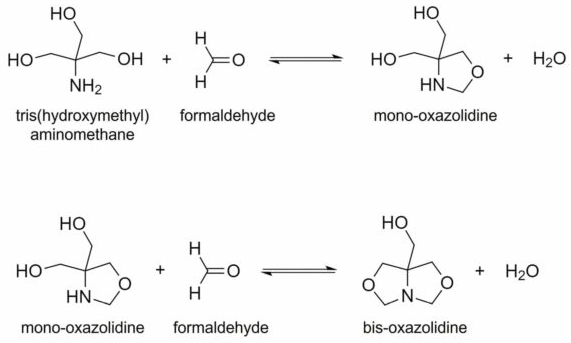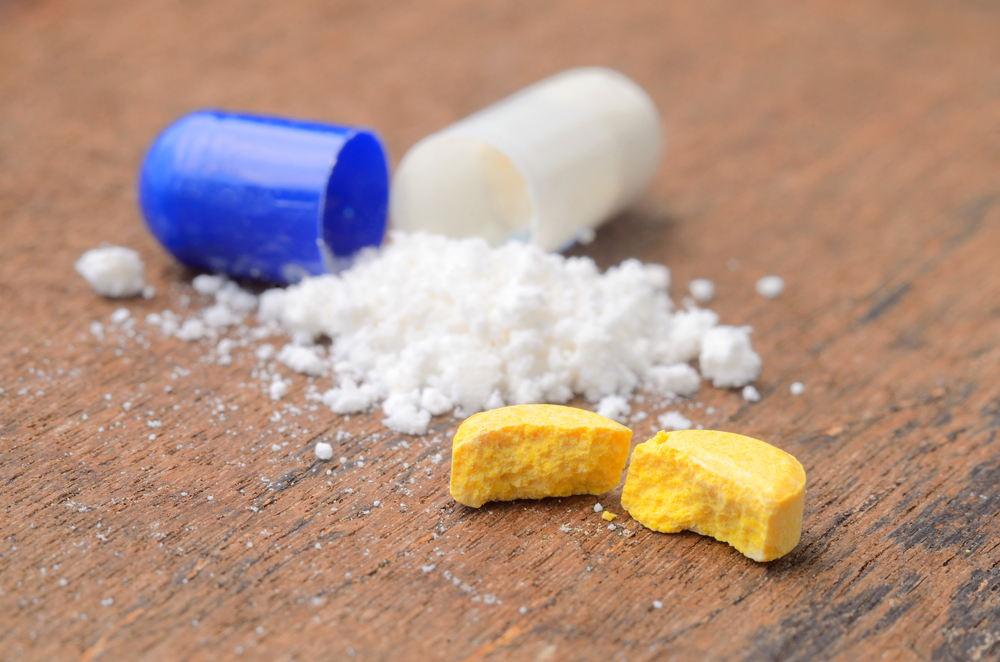Tromethamine:A Versatile Compound from Chemical Industry to Medicine
Release time:2025-03-24
Introduction
The common English chemical name for Tromethamine is Tris (hydroxymethyl) aminomethane, with the IUPAC name 2-amino-2-(hydroxymethyl)propane-1,3-diol, abbreviated as TRIS or THAM. It is referred to as Tromethamine in the United States Pharmacopeia (USP) and as Trometamol in the European Pharmacopoeia (EP). TRIS is a widely used pH buffer with applications spanning the chemical, cosmetic, and biopharmaceutical industries.
Physical and Chemical Properties

- Molecular Formula: (HOCH₂)₃CNH₂
- CAS Number: 77-86-1
- Molecular Weight: 121.14
- pH: 10.4 (0.1M@20℃)
- pKa: 8.3@20℃, 7.8@37℃
- Melting Point: 168-172℃
- Appearance & State: White or colorless crystalline solid powder
- Solubility: Highly soluble in water, slightly soluble in ethanol, and very slightly soluble in ethyl acetate
- Stability: Non-hygroscopic, non-volatile, and demonstrates excellent physical and chemical stability in storage
- Structural Characteristics: Contains three hydroxyl groups and one primary amine, exhibiting low biological toxicity
Applications
Chemical Industry
Coating Additive

Tromethamine's structure contains multiple hydroxyl functional groups, allowing it to form hydrogen bonds with various components in coatings. This improves stability, prevents pigment and filler aggregation, enhances uniformity, and ensures a smooth coating film. As a biodegradable organic amine, Tromethamine maintains the pH stability of water-based coatings while reducing volatile organic compound (VOC) emissions, which are harmful to both the environment and human health. Additionally, its fully substituted α-carbon adjacent to the amine prevents oxidative yellowing, ensuring long-term color stability of coatings.
Adsorbent Material
Tromethamine can modify activated carbon and reacts efficiently with formaldehyde. This enables the production of high-performance adsorbent materials for controlling harmful gases such as formaldehyde, benzene, and VOCs. Studies have also reported that Tromethamine-modified porous materials can effectively remove heavy metal ions from liquids.


Cleaning Solutions
Tromethamine primarily functions as a pH buffer in cleaning solutions, enhancing cleaning efficiency and stabilizing formulations without damaging substrate materials. Several patents describe its use in fluorine-free cleaning agents and microfluidic chip cleaning solutions. Additionally, Tromethamine is included in some contact lens cleaning solutions to maintain pH within an optimal range for protein membrane dissolution while minimizing eye irritation.
Battery Materials
As an electrolyte additive, Tromethamine regulates pH levels and facilitates the binding of polydopamine-coated oxide powders with lithium salts, optimizing electrolyte ion transport. It also enhances the conductivity and stability of modified silicon oxide anode materials. One patent highlights its role as a multi-hydroxy organic compound that prevents tin elements from forming stannate or metastannate ions, reducing aggregation and precipitation, thus improving electrolyte stability. A study published in Nature demonstrated that Tromethamine-functionalized graphene oxide exhibits outstanding electrochemical performance and stability as a supercapacitor electrode material.
Biotechnology
Gel Electrophoresis
Tromethamine is a key component in electrophoresis buffer solutions, such as TAE (Tris-Acetate-EDTA) and TBE (Tris-Borate-EDTA). These buffers maintain pH stability during electrophoresis, crucial for DNA, RNA, and protein migration and separation efficiency.

PCR Testing
Polymerase chain reaction (PCR) relies on Tromethamine as a common buffer component. It ensures a stable pH environment, promoting DNA polymerase activity and enhancing PCR amplification efficiency and specificity. During the COVID-19 pandemic, PCR technology played a crucial role in nucleic acid testing, providing rapid and accurate virus detection.

Fish Transportation
Tromethamine is used in live fish transportation to neutralize carbon dioxide produced by fish respiration, regulating water pH levels. This increases fish survival rates up to threefold in non-aerated, enclosed containers.

In Vitro Diagnostic Reagents
Tromethamine is a key ingredient in certain enzyme-linked immunosorbent assays (ELISA) and chemiluminescent reagents, serving as a buffer to stabilize pH, activate alkaline phosphatase, and eliminate non-specific adsorption.
Dissolution & Stabilization of Biological Samples
Tromethamine enhances the solubility of difficult-to-dissolve biomolecules while maintaining their stability during storage, including DNA, RNA, and proteins. It removes residual chlorine commonly found in city water supplies and, when combined with proteases, lipases, and amylases, significantly improves their stain removal efficacy in detergents.
Cosmetics
Tromethamine acts as a pH buffer, solubilizer, emulsifier, humectant, and even a fragrance modifier in various cosmetic and personal care products, including moisturizers, cleansers, mascaras, sunscreens, eye serums, and hydrating creams.

- pH Buffer: Maintains the optimal pH level in cosmetic formulations, ensuring stability and skin compatibility. It also neutralizes thickeners like carbomers, improving texture and feel.
- Emulsifier & Humectant: Its polyhydroxy structure provides moisturizing effects, helping the skin retain moisture and alleviate dryness and tightness.
- Safe Alternative: Due to its high biocompatibility, Tromethamine serves as a safer alternative to triethanolamine, eliminating the risk of residual amine odor or long-term amine release.
- Stabilizer: Prevents discoloration or darkening of skincare products after opening, maintaining the original appearance.
Pharmaceuticals
Contrast Agents
As a pH buffer, Tromethamine reduces the concentration of free contrast agent ions, ensuring uniformity and stability in formulations. It is present in iodixanol, iopromide, gadobutrol, and gadoxetate disodium—contrast agents used in X-ray imaging and MRI scans. Studies and patents also document its potential applications in ultrasound contrast agents.

Biopharmaceuticals
Tromethamine functions as a buffer and stabilizer in protein-based biologics to maintain their bioactivity. It is widely used in vaccines (such as Pfizer, BioNTech, and Moderna's mRNA COVID-19 vaccines) and protein-based therapeutics, including growth hormones, pepsin, and ADC (antibody-drug conjugates).
Pharmaceutical Excipients

Tromethamine is utilized across various drug delivery routes and dosage forms, including oral solids/liquids, gels, creams, and sprays. It enhances the solubility of poorly soluble drugs, improves bioavailability, stabilizes active ingredients, and prevents nitrosamine formation in formulations. Notable drugs containing Tromethamine include:
- Pain Relievers & Anti-Inflammatory Drugs: Ketorolac, fosfomycin, lodoxamide
- Diuretics: Torasemide
- Hormone & Metabolic Drugs: Dinoprostone, carbetocin, danuglipron
- Antivirals: Fostemsavir (HIV treatment)
- Anti-arthritic & Cardiovascular Drugs: Prilocaine, clesacostat
Active Pharmaceutical Ingredient (API)
As a sodium-free amino buffer base, Tromethamine functions as a proton acceptor that permeates cell membranes. It actively binds hydrogen ions to prevent or correct acidosis, making it particularly useful for patients with heart failure and metabolic acidosis. It also acts as an osmotic diuretic, increasing urine flow and pH levels, making it suitable for use in hypothermia anesthesia, shock, and cardiac arrest resuscitation.
Conclusion
Through extensive research, Tromethamine has proven itself as an essential component in chemical, cosmetic, biotechnological, and pharmaceutical applications. From improving coating stability to optimizing battery performance, from stabilizing cosmetics to serving as a crucial pharmaceutical excipient, Tromethamine showcases unparalleled chemical versatility and potential for innovation.
Grand Fuchi Pharmaceutical & Chemical Co., Ltd.is proud to introduce Tromethamine, a testament to our commitment to excellence. Our Tromethamine is produced usingthe highest-grade nitromethane sourced from our own facilities, ensuring ultimate purity control from the source and minimal nitrosamine risk.
Unlike traditional batch reactor synthesis, Grand Fuchi adopts an industry-leadingcontinuous fixed-bed production process, guaranteeing superior product quality and unparalleled batch-to-batch consistency.
- Exceptional Quality: High purity, stable performance, and zero nitrosamine risk, making it the ideal choice for pharmaceutical excipients.
- Consistent Batch Quality: Continuous production ensures uniformity across batches, reducing variability in manufacturing and enhancing production efficiency.
- Environmental Responsibility: Our production process minimizes environmental impact and complies with current environmental regulations, supporting your company’s sustainable development goals.
- Cost Efficiency: Whether as an alternative to imported products or for reducing production costs, our Tromethamine delivers world-class competitiveness.
Previous Page
Previous Page
Related News


